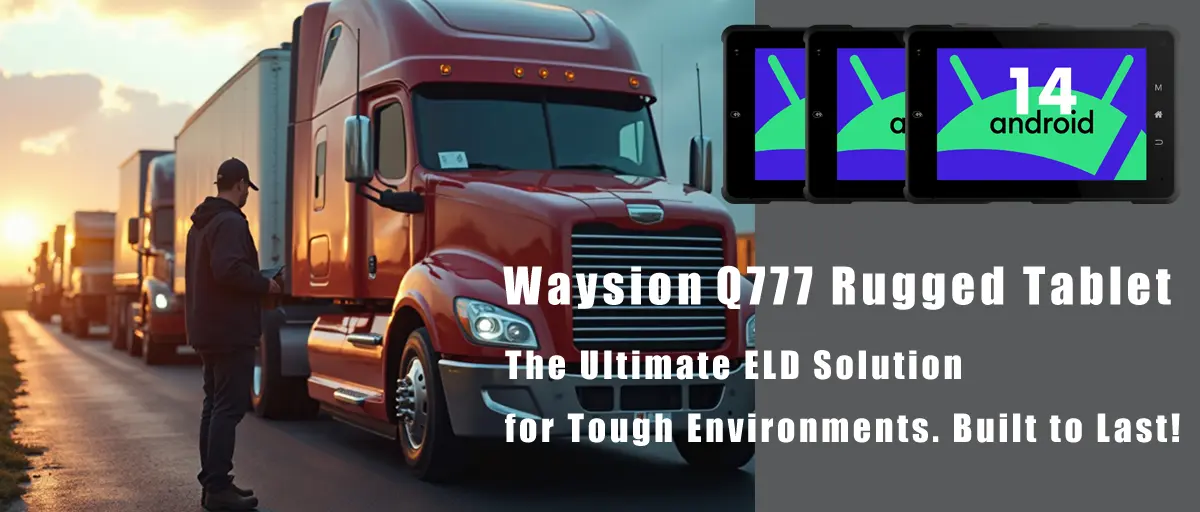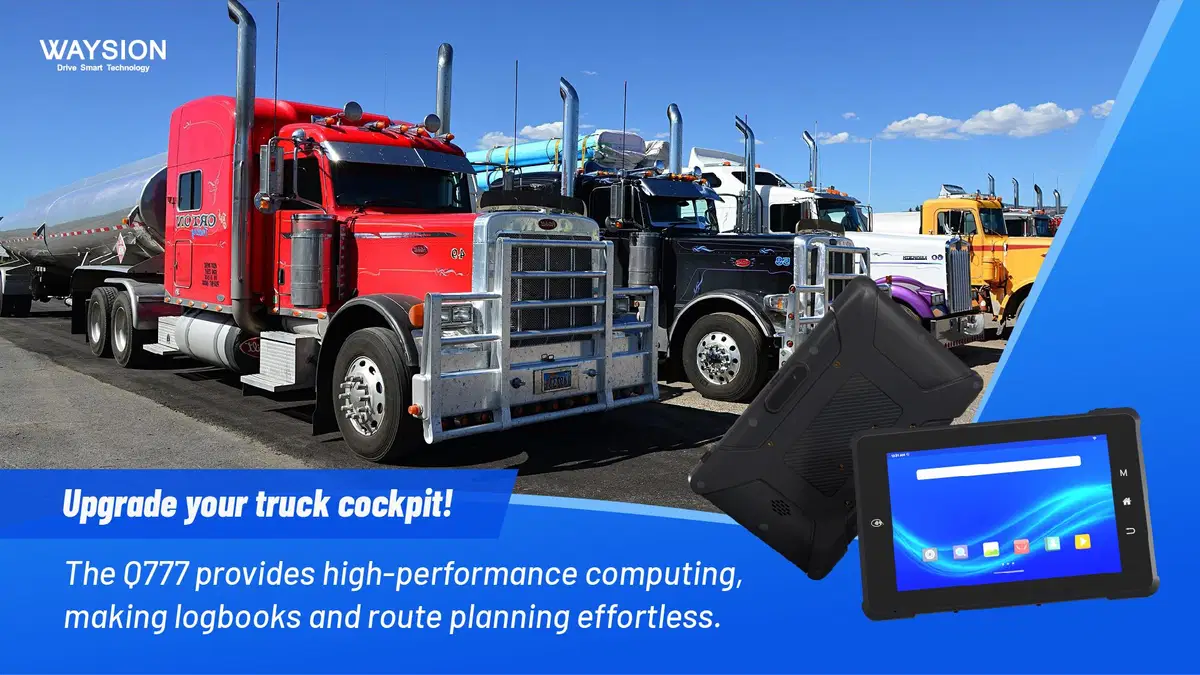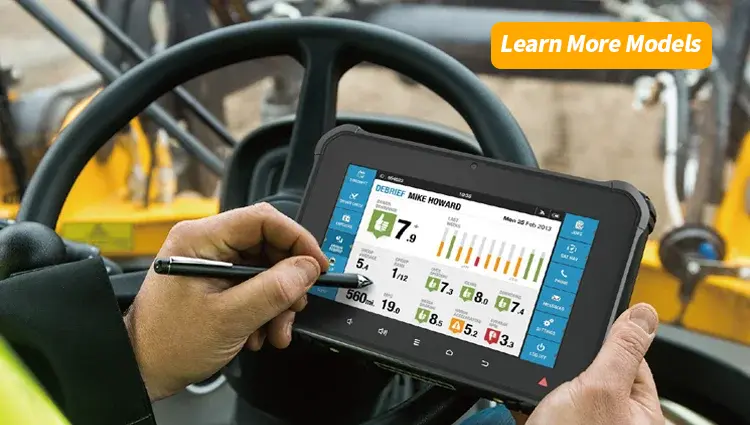Fleet Management Companies in Canada 2025–26 | Trends, Guide & Top Providers
In Canada’s vast and dynamic transportation landscape, fleets are under more pressure than ever to deliver efficiency, safety, and sustainability. Whether you manage trucks, buses/coaches, taxis, school buses, mining-construction vehicles or police vehicles, choosing the right fleet-management company is critical. This article will provide a comprehensive guide to the Canadian fleet-management market in 2025–26, help you evaluate providers, showcase top Canadian firms, surface key trends and regulations, and offer a practical roadmap for implementation.
1. The Canadian Fleet-Management Market 2025–26 (at a glance)
The fleet-management and telematics sector in Canada is experiencing steady growth driven by several factors:
- According to a 2024 market-report by Global Market Insights, the North American fleet-management market is projected to grow at a CAGR of ~15 % through 2028. (While the report covers the US and Canada collectively, Canada represents a meaningful portion.)
- Key growth drivers in Canada include rising fuel costs, stricter environmental and emissions regulations, greater demand for driver-safety solutions, and the adoption of IoT/connected-vehicle platforms.
- The geography of Canada adds complexity: long-haul routes, remote operations in the North, severe winter conditions and multi-provincial regulatory frameworks mean fleet-management solutions must be robust and adaptable.
- Telematics adoption in Canadian commercial fleets is increasing; one survey by the Fleet Owner Intelligence Forum (2023) found that over 60 % of Canadian fleets with 50+ vehicles had deployed some form of tracking/telematics hardware.
- Sustainability is playing a bigger role: fleets are increasingly required to report on fuel usage, emissions, idling time and driver behaviours; combined with government incentives for low-emission vehicles, this is boosting demand for comprehensive fleet-management platforms.

2. What a Fleet-Management Company Should Offer (Buyer’s Guide)
When you evaluate fleet-management providers, it’s essential to go beyond feature checklists and ask strategic questions. Here are the core dimensions and what you should weigh:
Core services
- Real-time vehicle tracking/telematics: location, speed, route history
- Fuel‐usage analytics and idling reports
- Maintenance scheduling, fault-code alerts, predictive maintenance
- Driver behaviour monitoring: harsh braking/acceleration, speeding, driver scorecards
- Route optimisation and dispatching (especially for delivery, bus, taxi operations)
- Compliance modules: hours-of-service/E-logging, emissions/fuel-reporting, provincial regulatory requirements
- Integration with other systems: ERP, telematics hardware, mobile devices, rugged tablets
Evaluation criteria
- Technology stack: Is the provider using an open platform? Are sensors/hardware owned in-house or third-party? Ability to integrate with your rugged tablets/vehicle-mounted computers?
- Scalability & flexibility: Can the solution scale from a pilot 10-vehicle program to 500+? Does it accommodate mixed-fleet (trucks + buses + taxis) environments?
- Data & analytics: Does the platform deliver usable dashboards, alerts, ROI-reports? How strong is the reporting engine?
- Security & data-privacy: Given Canadian privacy laws (PIPEDA, provincial rules), how is data stored, encrypted, who owns the data?
- ROI and cost model: Look at total cost of ownership (hardware + software + service) versus expected savings (fuel reduction, maintenance avoidance, improved asset utilisation).
- Vendor reputation & vertical specialization: Does the company have strength in your domain (e.g., mining, school bus, coach transit)? Do they have Canadian presence and local support?
- Change management & deployment: Implementation matters—driver training, rollout scheduling, integration effort, support services.
Common pitfalls to avoid
- Selecting purely on price and ignoring hidden costs (hardware replacements, connectivity fees)
- Not aligning the solution with business goals (e.g., simply buying tracking hardware with no usage plan)
- Ignoring driver adoption/resistance: even best technology fails if drivers don’t use it properly
- Failing to start with a pilot or clear KPI plan: You need measurable outcomes such as “reduce idling by 20 %,” “improve uptime by 10 %”
3. Top Fleet-Management Companies in Canada (2025)
Below are leading-edge providers operating in Canada, each with unique strengths. (Selection based on company size, solution depth, Canadian presence.)
| Company | Head Office (Canada) | Core Strengths | Ideal For |
|---|---|---|---|
| GoFleet | Mississauga, ON | Vehicle tracking, fuel usage & maintenance analytics; strong for mixed-fleets | Fleets seeking an integrated portal for trucks/vans |
| Element Fleet Management | Toronto, ON | Large-scale fleet leasing + management, global footprint | Enterprises with 500+ vehicles seeking end-to-end management |
| Geotab | Oakville, ON | Global telematics leader, open platform, strong analytics | Fleets wanting deep data insights and integration flexibility |
| Routific | Vancouver, BC | Route-optimisation as a service, savings of 20-40 % on mileage claimed | Delivery/logistics fleets with dynamic routing needs |
| Joyride Technologies | Toronto, ON | Smart mobility platform (bike-share/scooter) but expanding into wider fleet-mobility | Urban mobility operators, micro-fleet services |
| … | … | … | … |
4. Key Trends & Innovations to Watch
Here are the major directional shifts in the Canadian fleet-management space:
- Connected Vehicles & IoT: More vehicles are coming with factory-installed telematics, and fleet-management providers now integrate with OEM data. Predictive maintenance using sensor data is reducing unscheduled downtime.
- Electrification & Sustainability: As Canada pushes toward lower-emissions fleets (with federal/provincial incentives), fleet-management roles are evolving: tracking EV charging, battery health, range optimisation, and integrating sustainability metrics (CO₂, NOₓ) into dashboards.
- Data Analytics & AI: Advanced analytics are being used to optimise routes, forecast maintenance failures, interpret driver-behaviour patterns and convert raw data into actionable insights — not just reports.
- Rugged in-vehicle computing & hardware integration: Especially in mining, police, bus/transit fleets, rugged tablets, vehicle-mounted terminals, and serviced hardware are increasingly important. The platform must integrate seamlessly with these devices.
- Regulation & compliance as service: Fleet-management is migrating from “tracking” to “compliance service” — things like hours-of-service (HOS), real-time reporting to regulators, emissions/fuel-use reporting are now part of many platforms.
- Remote operations & harsh environments: For Canadian fleets operating in remote/mine/construction zones, connectivity (satellite/cellular hybrid), extreme weather hardware, and offline-capable telematics are now a differentiator.
Understanding these trends helps fleet operators choose providers who are not just solutions for today, but partners for tomorrow.
5. Canadian Regulatory & Operational Considerations
Operating a fleet in Canada has unique regulatory and operational challenges that your fleet-management provider should address:
- Federal & provincial trucking regulations: Authorities such as Transport Canada (TC) set rules for commercial vehicles; also provinces have their own hours-of-service (HOS) and E-logging mandates. A provider must handle these.
- Emissions/fuel-use reporting: Canada has regulations around greenhouse-gas reporting, idle reduction, fuel tax credits, carbon pricing (e.g., in provinces like British Columbia, Alberta). Fleet-management software needs modules that capture and report these.
- Data-privacy and security: Canadian federal law (PIPEDA) and provincial laws determine how personal/vehicle data can be collected and used. Your solution must comply.
- Geography & weather-extremes: Northern-Canada operations may encounter limited connectivity, extreme temperatures, and long routes. The solution must support offline data capture/synchronisation and ruggedised hardware.
- Mixed fleets and multi-province operations: If your fleet crosses provincial/territorial boundaries, the solution must support heterogeneous rules and reporting structures.
6. Implementation Roadmap for Fleet Operators
To get the most out of your investment in fleet-management technology, follow this roadmap:
- Assess current state – Document your fleet size, vehicle types, current tracking/maintenance practices, fuel usage, idle times, safety incident rates.
- Define business objectives – Select measurable goals: e.g., reduce fuel cost by 15 % within 12 months; cut maintenance downtime by 20 %; improve driver-score by 10 %.
- Pilot programme – Select a subset (10-20 vehicles) to trial with one provider. Measure results, collect driver feedback, refine processes.
- Select provider using evaluation criteria (see Buyer’s Guide section above). Negotiate scope, contract terms, service level agreements (SLAs).
- Roll-out full deployment – Gradually scale to entire fleet, ensure drivers are trained, hardware installed and integrated with other systems (ERP/maintenance/HR).
- Measure & refine – Use KPIs (fuel economy, idling time, maintenance cost, incident rate). Regularly review dashboards, adjust alerts, coach drivers.
- Continuous optimisation – Use analytics to find new improvement areas: lane-routing changes, driver-score incentives, remote asset monitoring, telematics for non-on-road vehicles (e.g., site equipment, mining haul-trucks).
Common mistakes to avoid
- Deploying hardware without establishing performance goals
- Ignoring driver engagement and change-management
- Failing to integrate telematics into maintenance/operations workflows
- Not revisiting metrics periodically (what gets measured gets improved)

7. Frequently Asked Questions (FAQ)
Q: What size of fleet will benefit most from a telematics/fleet-management solution?
A: While any fleet can see benefit, in Canada the “sweet-spot” is often 20+ vehicles. Smaller fleets (under 10) may still benefit but must pay close attention to ROI and choose low-cost or modular solutions.
Q: How long until I can expect ROI?
A: Many providers report measurable savings (fuel reduction, idle time) within 6-12 months of deployment. The timeline depends on prior baseline, driver behaviour, and how diligently you act on insights.
Q: Can older vehicles (without factory-installed telematics) integrate with modern fleet-management platforms?
A: Yes — many providers support retrofit hardware (plug-in OBD-II, CAN-bus adapters, rugged in-vehicle modules) and integrate with software platforms. When selecting, check compatibility with your vehicle types (trucks, buses, mining haul trucks) and environment (off-road, remote).
Q: How secure is my fleet and driver data?
A: Leading providers use encryption in transit/storage, role-based access, regular security audits and comply with Canadian privacy laws. As a buyer, request audit certificates, data-ownership terms, and ask about data-handling policies.
Q: What is the difference between “fleet-management software” vs “telematics hardware”?
A: Telematics hardware refers to the sensors/devices installed in vehicles (tracking, fuel sensors, driver behaviour). Fleet-management software is the cloud-dashboard/app where data is aggregated, analysed, visualised and actions/alerts are triggered. Successful solutions combine both seamlessly and integrate with your business workflows (maintenance, dispatch, HR).
Conclusion
The Canadian fleet-management sector is entering a phase of significant transformation. Companies that select the right provider, align the technology with business objectives, and execute a structured rollout stand to gain real improvements in efficiency, safety and sustainability. By leveraging the buyer’s guide above, exploring the company profiles offered, and staying attuned to trends and regulatory requirements, you’ll be far better positioned than firms who select a solution on autopilot.
If you’re ready to take action, begin by benchmarking your current operations, setting clear KPIs, and short-listing 2-3 providers that match your fleet’s size, industry (transport, bus/coach, mining, construction, police/taxi) and Canadian-specific needs. Equipped with the right insights and plan, you’ll move from simply “tracking vehicles” to managing a performance-driven fleet ecosystem.








